Let’s just say that reacclimatizing to the fall semester and playing quality chess hasn’t gone according to plan. It’s been tough – adjusting to new responsibilities as a senior, entering the job search, trying to graduate on time – was I too naïve in defining my NM goal?
Despite a reasonably respectable performance in the Washington International Blitz tournament last August, I lost my footing in the Pittsburgh Summer Open scoring 0.5/3, and tanked again in the Pennsylvania State G/60 Championships when I failed to convert this position:

Thud. A thirty point rating drop in a week over the two performances, and my confidence took quite the hit. Things didn’t get any better when IM Alex Katz beat me in 10 consecutive games playing irregular openings in my Challenger’s Corner stream on chess.com. So, as you can imagine, I was really struggling to find something to hold on to. Nothing seemed to be going right, despite forcing myself to train even more throughout the week. Can I even call myself a 2100 rated player anymore?
Despite the downward spiral, my Tuesday night pairing at the Pittsburgh offered me a unique second chance: a rematch with Jeff Schragin – the very player who had swindled me in the aforementioned position. Knowing I’d have the Black pieces, I knew I could not afford to lose the rematch. Not just because I was supposedly the higher rated player, but I knew I needed this game for me.
Over the past year, a lot of my closest supporters have given up on me, telling me it’s time to move on, that the NM title not only isn’t happening, but will never happen for me. And it’s been really hard to block out the noise, as each tournament “failure” comes with an increasing sense of doubt in myself. Admittedly, I haven’t been strong enough psychologically to fight for myself, but I knew this game was a potential breaking point for me. Can the free fall stop?
I returned Tuesday evening from Pitt’s career fair, and in suit and tie, I cranked out my homework, leaving me just 30 minutes to prepare my lines for the upcoming match. Before I knew it I was plugging in my headphones and starting to head out the door.
There she goes, there she goes again
She calls my name, pulls my – Ouch!
As I was gathering my things, my leg hit the edge of my bed, leaving a nasty bruise. Shi*t, smart move genius. So I was off to a great start. With Spotify still shuffling, I caught the nearby bus, and passed by my old apartment as I picked up some things at the nearby convenience store. Perrier was the lucky drink of the evening. I headed out and starting walking to the club building.
The rails are caught now
And I am falling down
Fools in a spiral
Round this town of steam
I got to the board, and set my clock, dodging questions about how I had botched my game last Sunday. It happens, but I won’t let it happen again. I was running a few minutes behind schedule, but I felt relaxed. Even with all the pressure I had built up in my head, I could only think I’m the underdog now as we shook hands and started the clocks. As I predicted, we quickly walked through some main line King’s Indian theory:
Schragin,Jeffrey (1929) – Steincamp,Isaac (2066)
21st Fred Sorenson Memorial (2), 25.09.2018
1.Nf3 g6 2.d4 Nf6 3.c4 Bg7 4.Nc3 d6 5.e4 0–0 6.Be2 Na6 7.0–0 e5 8.dxe5

Honestly, not the deviation I had expected. I’ve played Jeff a few times before, and he usually defaults to 8. Be3 or 8. d5. Caught a little off guard, I was a bit relieved. This King’s Indian line usually favors Black, thanks to the superior central structure.
8…dxe5 9.Qxd8 Rxd8 10.Bg5 Re8 11.Rad1 h6 12.Bxf6?! Bxf6
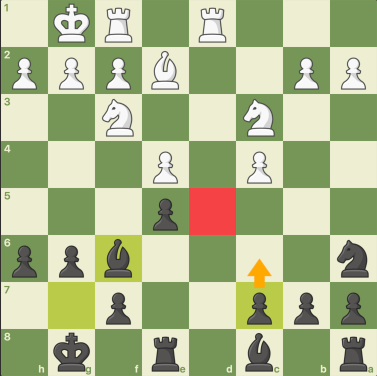
Opening theory at this point has basically concluded. White has elected to give up his bishop pair, which will bode well for me in the long run. Structurally, my plan is quite simple. I will play …c7-c6 to take away the d5 outpost, and as White tries to contest the d-file, I will aim to place a piece on the d4 square, since White has already extended with e2-e4 and c2-c4. White shouldn’t be much worse at this point, but if he isn’t careful, it would be particularly easy to fall behind
13.Rd2 c6 14.Rfd1 Nc5 15.b4 Ne6 16.Bd3?!

This move didn’t make a lot of sense to me. In the past few moves, I’ve rerouted my misplaced knight on a6 to e6 where it hits the d4 pawn, and managed to make White structurally commit to b2-b4. On the other side of the board, White doubled his rooks on the d-file so he could block it with Be2-d3.
I kind of have a free move here with this extra precautionary measure from White. I could try to launch my knight on to the d4 square, but tactically, it’s not as strong after 16…Nd4? 17. Nxd4 exd4 18. Ne2, and my pawn on d4 seems to be more of a liability than a strength. Seeing this, it didn’t take long to find the right plan, 16…a5!, trying to pry open the c5 square. White could try 17. a3, but in the game I had seen axb4 18. axb4 Ra3 19. Nb1 Ra4 20. Rb2 Rd8 21. Bc2 Rxd1 22. Bxd1 Ra1 23. Nc3 Nd4

Black is clearly better here, so instead White opted for 17.b5, but this clears the c5 square, and after 17…Nc5, my c8 bishop could finally get into the game.

This is a big development. My plan was to trade my light squared bishop (which can never attack d4) for the f3 knight (which can attack d4). A dream position would be if I could trade my f6 bishop for his c3 knight, leaving his useless light squared bishop on the board, as my knight finds comfort on d4.
18.Be2 Bg4 19.h3 Bxf3 20.Bxf3 Rad8?!=

A bit too weary of an incoming Rd2-d6 idea, I decided my best chance to play for an advantage was the minor piece endgame, missing the strong idea 20…Bg5! 21. Rd6 Be7 22. R6d2 =+
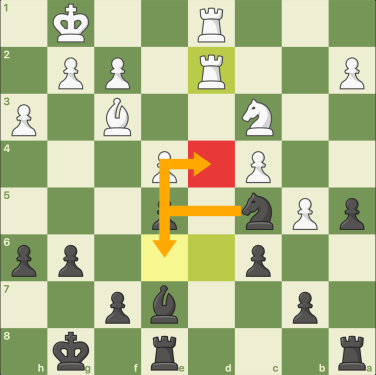
There’s still a long ways to go, but Black is really flexible, and White’s pieces are misplaced. Here I can continue to play for …Nc5-e6-d4, with the added perk of a potential …Be7-b4. Black stands better.
Instead of going for the ending, White erred with 21.Bg4?, and was never able to fully recover. I had anticipated 21. Rxd8 Rxd8 22. Rxd8+ Bxd8 23. Bd1 with the following endgame:

I was fully aware that with best play, White should hold. However, I liked that I didn’t have any clear weaknesses in the position. Even if I allowed White to play 23. Bf3-c8 in one move, it still cannot dislodge my pawn structure.
Speaking of pawn structure, my knight still stands strong on c5, and its powers can be augmented with a future …f7-f5 push. There’s a lot of chess to be played still, though I admit, 20…Bg5! was a key miss.
Luckily enough, 21.Bg4? allowed me to insert 21…Rd4 22.bxc6 bxc6 -/+, and there was no doubt that I was clearly better here:

White’s center is about to collapse, as both e4 and c4 are weak pressure points. White’s bishop on g4 still isn’t compatible with the pawn structure, and I have the luxury of playing …Rd8 or …Rb8 if needed. With not a glimpse of activity left in the position, White is basically strategically lost. My opponent fell apart in just a couple moves.
23.Bf3 Rxc4 24.Ne2 Bg5 25.Rd6 Nxe4

Clipping a second pawn. Here White realized that the point of 24…Bg5 was that if 26. Bxe4 Rxe4 and there isn’t time to win the pawn on c6 because the knight on e2 is hit. Instead, my opponent blundered immediately with 26.Kf1?? Nxd6 With the rook hung, White tendered his resignation.
Even with what’s proven to be a difficult September, I doubled my point total with 2/2 with four rounds to go. Emotionally this was a big win for me, but I’m not going to pretend like all of my problems are fixed now with this result. Looking beyond some of my confidence issues this month, a lot of my recent games have shown me that I really need to revaluate how I make some of my decisions over the board. This is going to be a long rebuilding process, and I need to be vigilant in these next few months.

It wouldn’t be Pittsburgh if the week didn’t finish with another opportunity to get in a game. Sunday afternoon marked the opening weekend for the Pittsburgh Chess League, one of the oldest chess leagues in North America. After grabbing brunch with a friend in Oakland, I found myself with a couple hours to warm up on University campus before my game started. It didn’t take long to find the computer lab in the library to play some music and online blitz.
I’m looking to the sky to save me
Looking for a sign of life
Looking for something help – is that mate?
https://twitter.com/isaackaito/status/1046422832958312448
So yeah, I was feeling pretty good. Now with the White pieces, I decided to take some opening liberties against an expert: 1. d4 d5 2. Bf4 c6?! 3. Nc3 Nf6 4. e3 e6 5. g4?!:

Maybe a bit too confident here, but why not? Black has willingly boxed in his c8 bishop, and basically wasted a move with 2…c6. I don’t play this kind of stuff often, but it’s not like the g2-g4, h2-h4 ideas are totally original in these structures…
To his credit, Black actually defended reasonably well, but it came at the cost of time.

I needed to keep the pressure on Black, so I immediately sacrificed the exchange on f5 to win a massive pawn center. During the game, I figured it was justified since all of the files are closed and d5 falls. It isn’t the machine’s top choice, but I maintain that it was still an extremely practical decision since the knight on f5 is well suited. 17. Rxf5!? exf5 18. Nxd5 Qa5+ 19. Nc3 Rc8 20. Bf3 b5 21. Kf2 0-0

Here I hold a nice advantage, my goal is to bring my knight to f4, while cementing my central hold with c2-c3, and expanding on the kingside with h2-h4. Already in a massive time hole, Black traded queens and bishops, making the endgame even more favorable for me.
As I was cruising, our team was already down 0-2, so I had to be careful and avoid any mistakes to save our outfit from losing the opening match of the season. The final critical position required some brute force calculation, but the idea was straightforward:

Nearly all roads lead to Rome, but I forced myself to see the entire line before continuing. Let’s see if you can too: 43. Ke5 h4 44. Nh5 h3 45. Nxg7 h2 46. Nf5+ Kd8 and now the best move is not 47. Ng3 (though it will also get the job done), but rather to play for mate! 47. Kxd6! h1Q 48. e7+ and now Black realized that he had to let me promote, and the game ended shortly after.

So after a week of drowning in bad chess, I got to finish September on a high note. There’s a lot of tough games ahead, and I need to hold myself to a higher standard as they approach. But if this week taught me anything, I’ve earned the right to tell myself: you got this, bro.







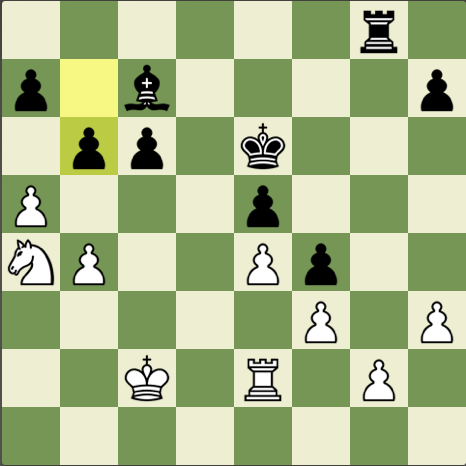





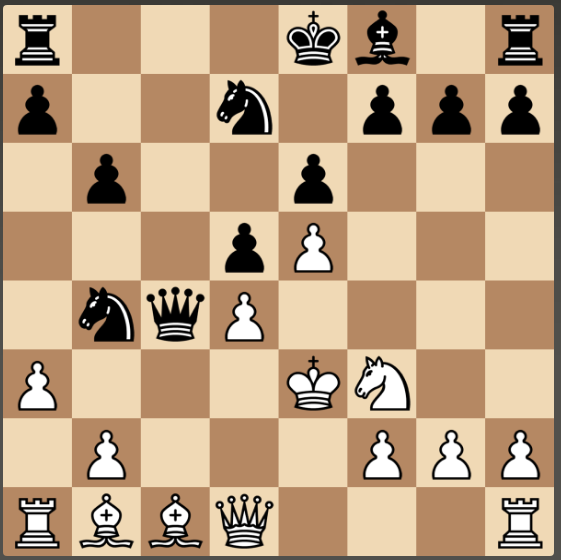











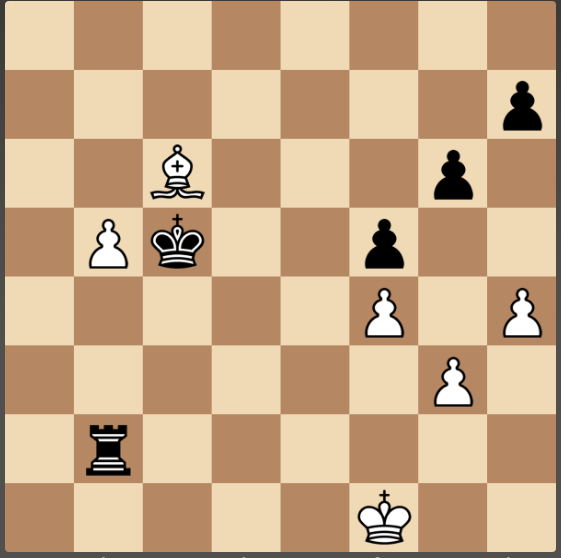


 In the position above, many players would choose d3 instead of d4.
In the position above, many players would choose d3 instead of d4.